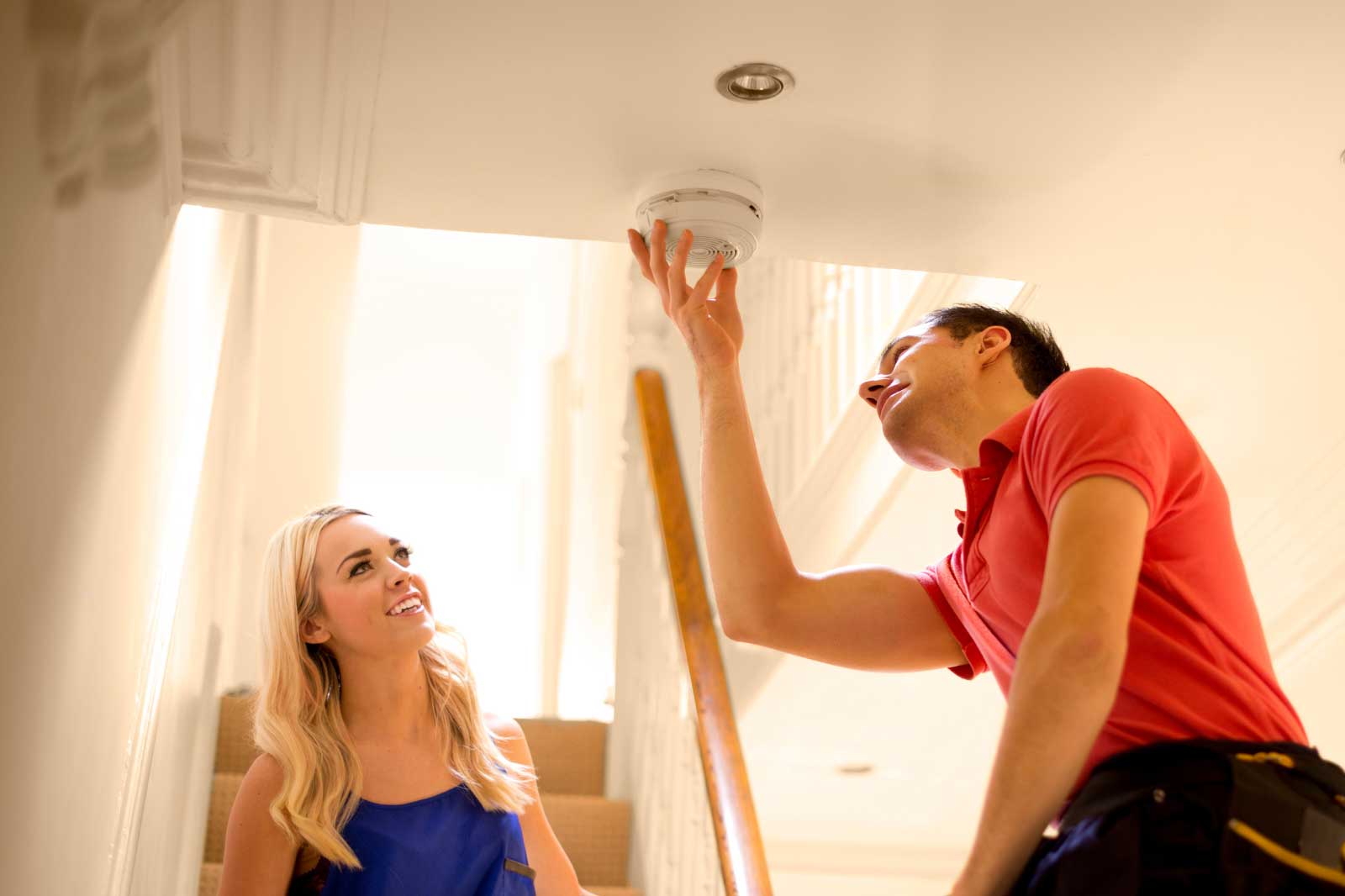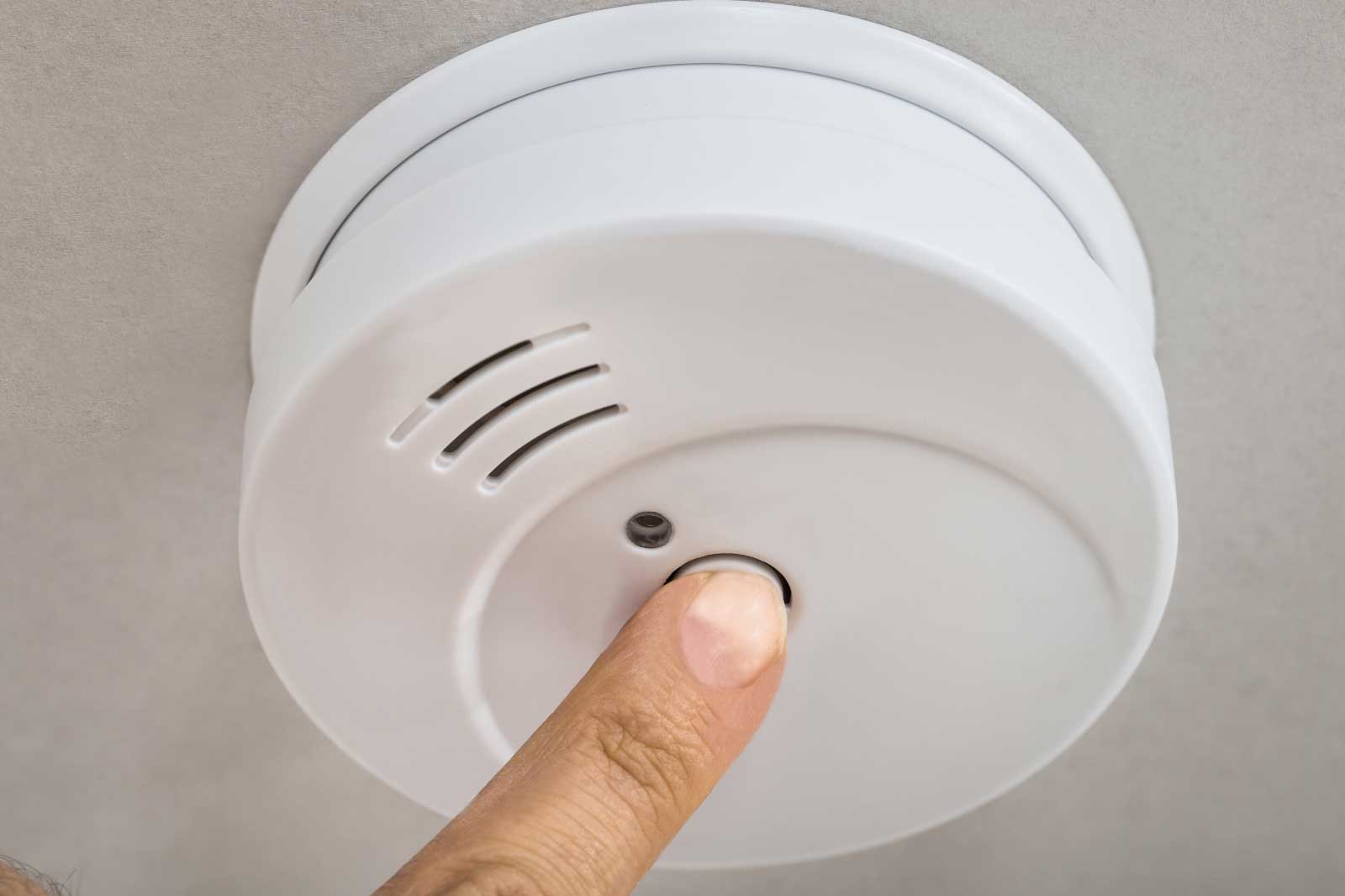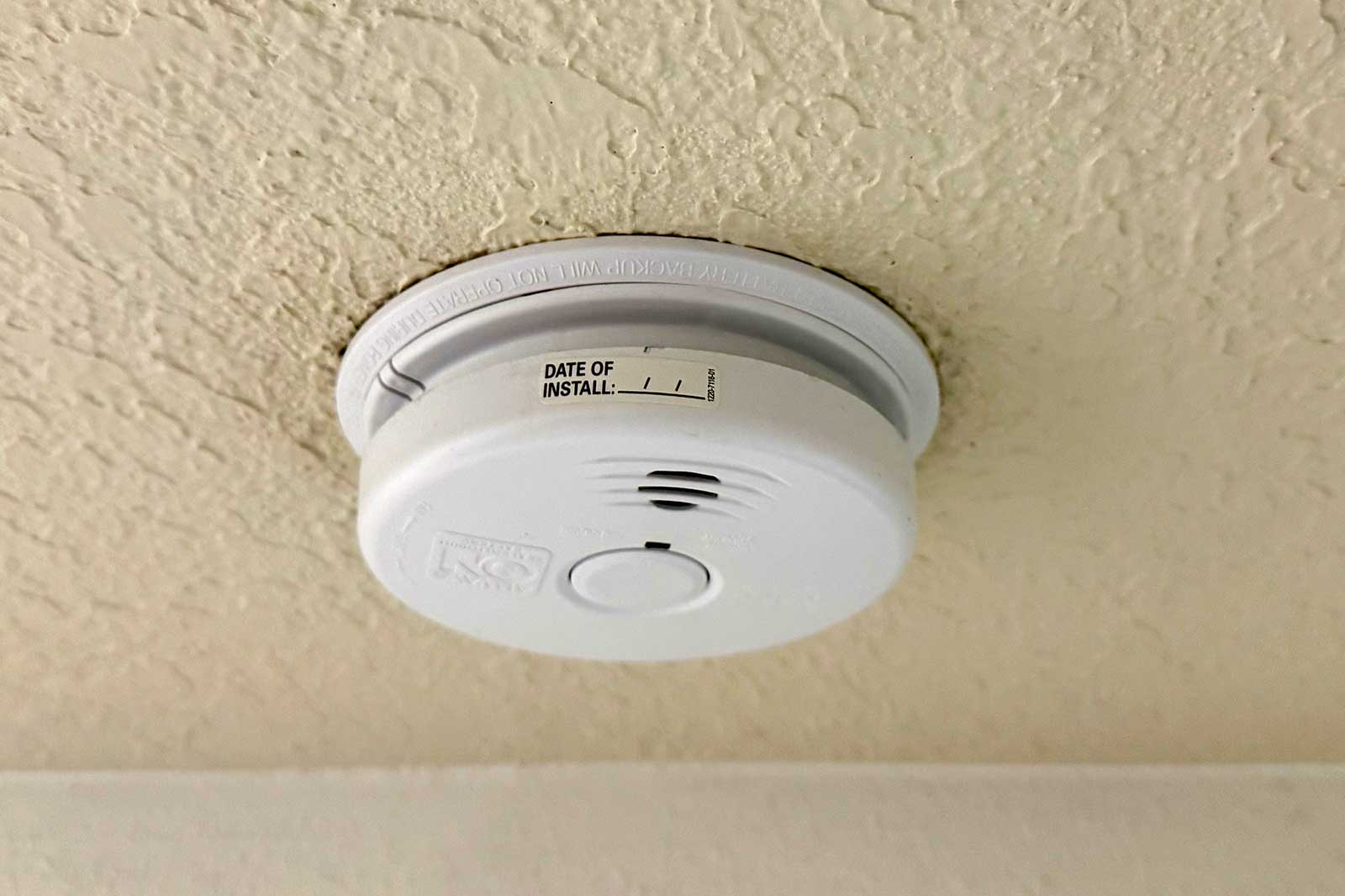Smoke detectors are critical safety devices installed in homes and businesses to protect occupants from fire hazards and carbon monoxide poisoning. However, a continually beeping or chirping smoke detector can cause confusion and concern. In regions like Clearwater, Tampa, and the greater Tampa Bay area—where Tidal Restoration operates—proper fire safety and maintenance are essential, especially after restoration projects. This article explains what different beeping patterns mean, provides troubleshooting tips, and offers long-term solutions to ensure these devices function properly, protecting property and lives.
In this comprehensive guide, you will learn about low battery warnings, the impact of dust accumulation, sensor malfunctions, and the differences between intermittent and continuous beeping. The article also includes step-by-step troubleshooting tips, maintenance best practices, and guidance on interpreting various beeping sounds. With insights drawn from fire safety guidelines by leading authorities such as the National Fire Protection Association, this guide is designed to restore peace of mind for homeowners and business owners—especially in the Tampa Bay region managing property damage from water, fire, or mold incidents.
Transitioning to methods for diagnosing and correcting issues, the following sections cover specific aspects of fire alarm alerts and proper remediation practices.
What Does a Smoke Detector Chirping or Beeping Mean?

Smoke detectors use audible signals to indicate potential issues. Typically, a short, intermittent chirp signals a low battery condition, alerting you that power in the device is running low. Manufacturers design these warnings so that you replace the battery before the detector’s performance is compromised. Continuous or loud beeping may indicate a sensor malfunction or that dust and debris are interfering with normal operation.
What Is the Smoke Detector Low Battery Warning?
Fire alarms emit periodic chirps when the battery is low. These initial beeps serve as a reminder that battery voltage is dropping below optimal levels. In most devices, replacing the battery immediately stops the chirping and restores proper function. In some cases, the beep may continue after battery replacement if the device needs a reset or if the battery contacts are corroded. Always verify the battery type specified by the manufacturer and use fresh batteries to maintain reliable performance. This warning is common in both hardwired alarms and models with integrated backup batteries.
Can Dust or Dirt Cause Smoke Detector Beeping?
Yes, dust and debris can interfere with a smoke detector’s sensor by scattering light within the unit, which can simulate the presence of smoke. Routine cleaning—using a soft brush or vacuum—can remove accumulated particles and help reset the sensor’s calibration. Regular maintenance not only stops nuisance chirping but also extends the smoke detector’s lifespan and improves overall fire safety.
How Does a Fire Alarm Signal a Malfunction?
When a smoke detector malfunctions, it may emit a different sound compared to the low battery chirp. A steady, loud beep often indicates a failure in the device’s circuitry or sensor. In such cases, cleaning or battery replacement may not stop the beeping. The unit might require a reset according to the manufacturer’s instructions, or it may need to be replaced altogether. Some modern detectors display error codes through blinking LED sequences that require consulting the user manual or calling a qualified electrician.
What Does Intermittent vs. Continuous Beeping Indicate?
Intermittent beeping usually points to temporary issues such as a low battery or dust buildup, resolved through battery replacement or cleaning. In contrast, continuous beeping often signals more serious problems like sensor failure or wiring issues. While intermittent chirps generally require routine maintenance, continuous alarms demand immediate attention to avoid compromising fire safety, especially in hardwired systems that serve as part of a broader fire alarm network.
How Do I Stop My Smoke Detector From Beeping? Step-by-Step Troubleshooting Tips
Stopping constant beeping requires a systematic approach to identify and fix the problem. Follow these troubleshooting steps to restore your smoke detector to proper working order and eliminate extraneous chirps, ensuring continued compliance with fire safety standards.

How to Reset a Smoke Detector Safely and Effectively
Often the first step is to reset the fire detector. To do this, press the test or reset button for several seconds until you hear a change in the beep sequence or the alarm stops. For battery-operated units, remove the detector from its mount, disconnect the battery, wait briefly, and then reinsert it—ensuring the battery contacts are clean. Some newer models require holding down the button for as long as 20 seconds until an indicator light blinks. Always consult the manufacturer’s instructions, especially if the unit is hardwired or part of an interconnected system.
When Should You Replace the Smoke Detector Battery?
Replace the battery as soon as you receive a low battery warning. Experts generally advise replacing batteries in all smoke detectors at least once a year, regardless of whether an alert has sounded. If the chirping continues after a new battery is installed, it may be due to factors like temperature or humidity variations affecting battery performance. In such cases, consult the manufacturer’s recommendations; if the problem persists, the unit might require a full reset or replacement, particularly if it has reached the end of its operational life as defined by standards from the National Fire Protection Association.
How to Clean and Maintain Your Smoke Alarm to Prevent Beeping
Regular maintenance is key to ensuring your fire alarm operates reliably. Dust, bugs, and other particulates can accumulate inside the detector and cause false alarms. It is recommended that you inspect and clean your smoke detector at least twice a year using a vacuum or a soft brush. Compressed air can be used for stubborn particles. After cleaning, test the unit by pressing the test button to ensure the sensor is functioning properly. Scheduled cleaning is an essential component of fire safety best practices for both residential and commercial properties.
What to Do if Your Smoke Detector Keeps Beeping After Battery Replacement
If the smoke detector continues to beep after a battery replacement, first verify that the battery is correctly installed and that the contacts are clean. Next, perform a reset as described above. For hardwired detectors, inspect the wiring for any faults or issues with the power supply. Persistent beeping despite these measures may point to sensor failure or ongoing dust interference. In such cases, it is advisable to contact a qualified technician or electrician for a thorough diagnostic check. Document the issue and report it to your fire safety provider to ensure the overall system remains effective.
Why Is My Smoke Detector Beeping at Night? Causes and Solutions
Nighttime beeping can be especially disruptive. Several factors, including environmental conditions and temporary electrical glitches, can contribute to alarms during the night. Understanding these causes will help you implement targeted solutions and prevent future disturbances.
How Does Temperature or Humidity Affect Smoke Alarm Beeping?
Temperature and humidity changes can affect smoke detector performance. At night, condensation or increased humidity may accumulate on the sensor lens, distorting the internal light beam and triggering false alerts. In regions like Tampa Bay, rapid temperature shifts can also cause electronic components to expand or contract, leading to intermittent beeps. Ensuring a stable indoor temperature through proper HVAC settings or relocating the smoke alarm from areas with extreme fluctuations may help minimize false alarms.
Can Electrical Issues Cause Nighttime Beeping?
Electrical issues are another common cause of nighttime beeping. Hardwired smoke alarms rely on a constant voltage; any fluctuations, surges, or even power outages can lead to erratic behavior, such as persistent beeping. If the back-up battery is also affected by brownouts, the alarm may continue sounding even when there is no smoke. In these situations, it is important to have an electrician inspect the wiring or install surge protection to ensure a stable power supply.
What Are the Best Practices to Prevent Nighttime Beeping?
Preventing nighttime beeping combines proper maintenance with environmental controls. Ensure that your smoke alarm is installed away from drafts, vents, or areas with frequent temperature changes. Routine battery replacements and cleaning are essential. Regularly inspect the wiring for hardwired systems to catch any inconsistencies early. Additionally, consider using smoke detectors equipped with advanced sensors that are less sensitive to environmental changes. For extra reassurance, integrating the alarm with a professional monitoring service can help detect issues promptly without compromising safety.
How Can I Identify Different Smoke Alarm Beeping Sounds?
Recognizing different beeping sounds is crucial for effective troubleshooting. Each type of sound provides clues about the underlying issue, helping you decide whether a simple fix is sufficient or if professional assistance is needed.
What Does a Chirping Sound Mean vs. A Loud Beep?
A chirping sound usually indicates a low battery warning. These beeps tend to be short and recurring at intervals, often lasting one minute or more between chirps. A loud, continuous beep, on the other hand, typically signals a severe error such as a sensor malfunction, wiring issue, or even an actual fire event. While a single chirp is a routine reminder for maintenance, a continuous beep should be treated as an emergency requiring immediate investigation. Always refer to your device’s manual for specific guidance on interpreting these signals.
How to Recognize Carbon Monoxide Detector Beeps vs. Fire Alarm Beeps?
Although smoke detectors and carbon monoxide detectors serve different functions, their alarm sounds can sometimes be confused. Carbon monoxide detectors may emit a warbling tone or a series of distinct beeps that differ in cadence from the low battery chirp of a fire alarm. Some modern systems even include voice alerts that specify whether the alarm is triggered by carbon monoxide or smoke. Knowing these differences can help ensure you respond appropriately in an emergency.
What Are the Audible Signals for Fire Alarms vs. Low Battery Warnings?
Fire alarms are designed to capture your attention immediately and are typically loud and continuous, often accompanied by flashing lights. In contrast, low battery warnings are softer, more intermittent chirps that allow some time for routine maintenance. Recognizing the difference is crucial because ignoring a continuous fire alarm could have serious consequences, whereas a low battery chirp indicates that you have time to address the issue safely.
When Should I Replace My Smoke Detector? Signs and Recommendations
Regularly replacing your smoke detectors is critical for ensuring home safety. Manufacturers typically recommend replacement every 10 years, regardless of whether the unit has started chirping. Over time, sensor degradation, worn battery contacts, and environmental damage can compromise the detector’s reliability, increasing the risk of failure in an emergency. Paying attention to persistent beeping that does not resolve with routine troubleshooting can help you decide when it is time to replace the unit.
How Long Do Smoke Detector Batteries Typically Last?
Fire alarm batteries generally last about one year, though this can vary depending on usage and environmental conditions. Many modern detectors feature a built-in indicator that alerts you when less than 10% of battery capacity remains. For hardwired detectors with battery backups, it is recommended to replace the batteries annually to ensure that the device remains operational during power outages. Regular testing and battery replacement are essential to prevent intermittent chirps and maintain overall safety.
What Are the Manufacturer’s Guidelines for Smoke Detector Replacement?
Manufacturers advise replacing each smoke detector every 10 years. This guideline accounts for natural sensor degradation and accumulated wear on electronic components. While regular testing and battery replacement can prolong the device’s effective lifespan, the inherent limitations of aging technology necessitate periodic replacement. Check the manufacturing date on your detector and follow the manufacturer’s maintenance recommendations to ensure your system meets current fire safety standards.
How to Choose a Reliable Fire Detector to Avoid Frequent Beeping
Choosing a reliable smoke detector involves comparing models known for longevity, minimal false alarms, and simplicity in maintenance. Look for products that meet nationally recognized certification standards and have positive performance reviews under various conditions. Dual-sensor detectors (combining ionization and photoelectric technology) and interconnected systems often offer comprehensive protection, as they can alert the entire network if one unit fails. Additionally, consider models with a silence or hush feature that allows temporary deactivation during false alarms without reducing long-term safety.
What Are the Best Practices for Smoke Detector Installation and Maintenance?
Proper installation and regular maintenance are vital to ensure that your smoke detectors work when needed. Correct placement is essential for early fire detection, and regular testing helps verify functionality.
Where Should Smoke Alarms Be Installed for Optimal Performance?
For best results, install smoke detectors in every bedroom, outside each sleeping area, and on every level of your home—including basements and attics. Detectors should be positioned high on walls or ceilings, as smoke rises. In larger buildings or commercial facilities, multiple interconnected detectors ensure that an alarm in one area alerts the entire system. Avoid installing detectors in kitchens or near bathrooms where steam or cooking fumes might trigger false alarms.
How Often Should You Test and Maintain Your Smoke Detector?
Smoke detectors should be tested at least once a month by pressing the “test” button to ensure they are operational. In addition, perform a thorough cleaning and inspection—ideally twice a year—to remove dust and debris that could cause false alerts. If a unit regularly exhibits false alarms despite routine maintenance, it may require repair or replacement.
Can Professional Monitoring Services Help Prevent False Alarms and Beeping?
Professional monitoring services add an extra layer of security by continuously tracking fire alarm performance and coordinating rapid responses if issues arise. These services often include remote diagnostics to identify sensor degradation or recurring false alarms. For commercial properties, especially those managed by restoration experts like Tidal Restoration, professional monitoring helps maintain compliance with fire safety regulations and minimizes disruptions.
What Are Common Smoke Detector Troubleshooting FAQs?
Addressing common issues with smoke alarms is essential to ensure they remain an effective part of your fire safety system. Below are answers to frequently asked questions.
Why Does My Smoke Detector Beep Even When There’s No Smoke?
A fire alarm may beep even when there is no smoke because of a low battery, sensor contamination, or a minor electrical glitch. Dust buildup or temporary sensor issues can lead to false alerts. Replacing the battery and cleaning the device are the first steps. If the beeping continues, the sensor may be malfunctioning and require a reset or replacement.
How Do I Silence a Smoke Detector Temporarily?
Many modern smoke alarms have a hush or silence button that temporarily suspends the alarm—typically for 10–15 minutes. This pause allows you to check the battery and sensor without permanently disabling the alarm. However, never leave the alarm silenced for an extended period; always address the underlying cause as soon as possible to maintain proper protection.
Can Power Surges Cause Fire Detector Beeping?
Yes, power surges can disrupt the normal operation of hardwired smoke detectors. Surges may affect the unit’s internal circuitry or battery backup, leading to persistent beeping even after the surge has passed. If this occurs, it is important to have an electrician inspect the wiring and install surge protection if needed.
What Should I Do if My Smoke Detector Is Beeping After a Power Outage?
After a power outage, a smoke detector may beep while it resets or recalibrates. First, check whether the unit requires a battery replacement or a manual reset. If the beeping persists, inspect the wiring and power supply for any issues or residual damage. If necessary, disconnect the unit briefly to allow it to recalibrate, and then reconnect it. If the problem continues, contact a certified technician or electrician to ensure the detector is functioning properly.
Frequently Asked Questions
Q: How often should smoke alarms be replaced to ensure maximum safety? A: Most manufacturers recommend replacing smoke detectors every 10 years. Sensor degradation and wear on electronic components over time can compromise detection capacity. Regular testing and maintenance are critical to ensuring optimal performance.
Q: Why do some high-end detectors have multiple beeping patterns, and how can I tell which one is an emergency? A: High-end detectors often use different beeping patterns to distinguish between low battery alerts, sensor malfunctions, and emergency situations. A rapid, continuous beep usually indicates an emergency, while intermittent chirps suggest routine issues. Always consult the user manual for specific details on beeping patterns.
Q: Can connectivity issues in hardwired smoke detectors contribute to false alarms? A: Yes, loose wiring or poor electrical connections can cause voltage fluctuations that trigger false alarms. Regular inspection by a qualified electrician can help resolve connectivity issues and reduce false beeping.
Q: Do smart smoke detectors offer improved troubleshooting features compared to traditional models? A: Smart smoke alarms provide enhanced diagnostic features, remote monitoring, and notifications via smartphone apps. They can track battery levels, sensor health, and environmental changes, reducing the likelihood of false alarms while facilitating timely maintenance.
Q: How can regular fire safety inspections help reduce the frequency of smoke alarm beeping? A: Regular inspections can identify issues such as low batteries, dust buildup, or wiring problems before they cause false alarms. Routine professional evaluations help maintain detector reliability and overall fire safety.
Q: Are interconnected smoke detectors more prone to false alarms compared to standalone units? A: Interconnected smoke detectors are designed so that when one unit detects an issue, all alarms in the system sound. While this increases safety, a malfunction in one unit can trigger false alarms in the entire network. Regular maintenance of each unit helps manage sensitivity and reduce the risk of false alarms.
Final Thoughts
Smoke detectors are essential for protecting lives and property from fire hazards and carbon monoxide poisoning. Understanding their beeping signals is crucial for effective maintenance and timely troubleshooting. Routine actions such as battery replacement, cleaning, and regular testing help ensure these devices operate as intended. When beeps persist after standard troubleshooting, seeking professional assessments can address underlying issues. Homeowners and business owners in regions like Tampa Bay should adopt proactive fire safety measures to maintain optimal performance and safeguard their properties.

